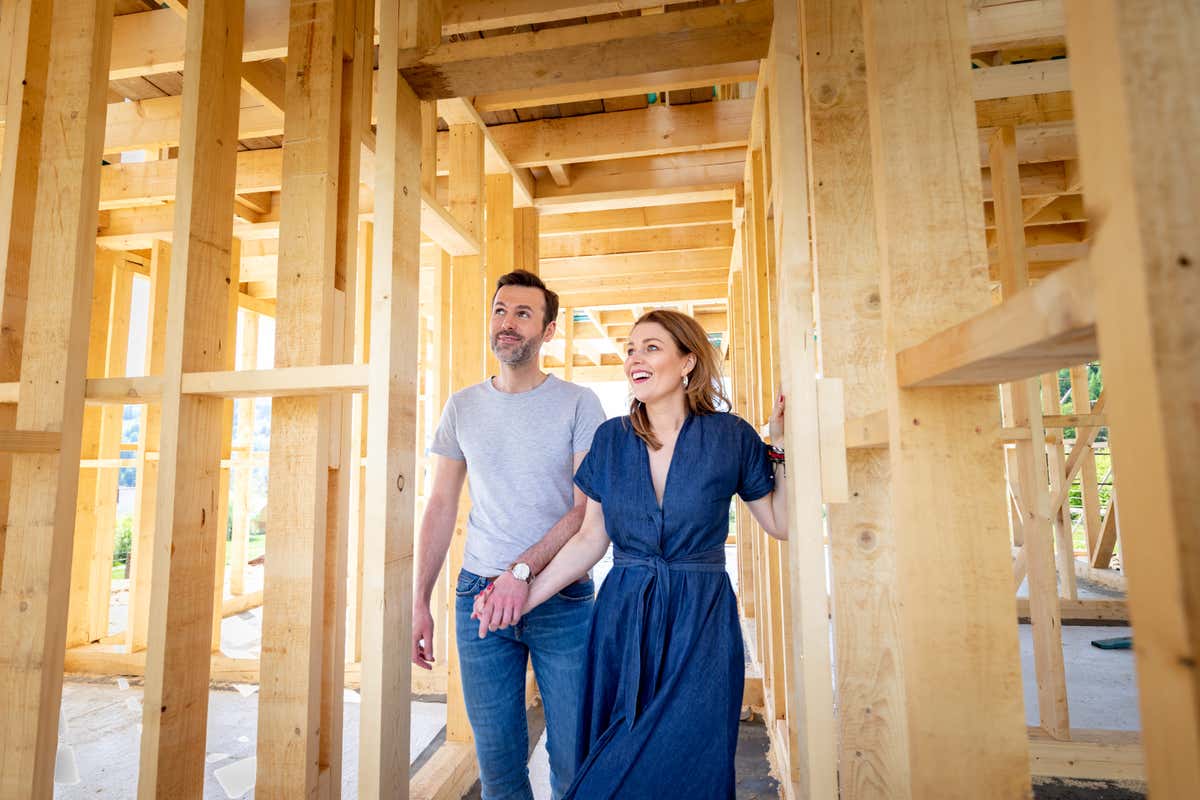The materials used to build your home help determine what your home is worth, as well as its durability, energy efficiency, and sustainability. Building materials can even play a role in the cost of your homeowners' insurance. After all, certain materials can stand up to weather better than others, so they help reduce risk to your home.
When evaluating house construction types, we can generally group them into four main categories of building materials. These categories are masonry, log, frame, and superior fire-resistive.
Let's take a closer look at each.
Masonry
Masonry homes consist of brick and stone structures. Components are put together with mortar. This is typically the most costly type of construction, but it does have its advantages. It has a high fire protection rating because it is non-combustible, plus it holds up better against natural disasters like hurricanes and tornadoes. All of this means home insurance rates on masonry homes are usually lower than on homes built of other materials.
Masonry construction has two other important benefits. The first is its increased thermal mass that helps the home remain energy efficient. Second, bugs and pests have a hard time penetrating masonry.
For all of its advantages, masonry does have some limitations. Because it is so heavy, it is difficult and costly to transport. Homebuilders must pay added attention to the foundation because even a little settling can lead to cracks and potential moisture damage. Building these homes requires good weather, further limiting construction.
Log
A log home consists of stacked logs where the same wood is seen from the inside as-is from the outside. There are three common house construction types for log homes: full scribe, post and beam, and timber frame.
- Full scribe: The full scribe log home stacks horizontal logs to form walls. Grooves cut into the logs allow them to be stacked snugly together. These homes are known for their energy efficiency and tend to withstand high winds and rains. They’re usually the most expensive to build, requiring more logs, specialized trades, and attention to the detail of eliminating gaps.
- Post and beam: This type of log home uses full logs placed vertically as structural posts to support horizontal logs and beams placed across them for structural support. Post and beam homeowners get maximum insulation and energy efficiency.
- Timber frame: These homes are really a hybrid of a log home and a frame home. Logs are first used as posts and beams to hold the structure together and then finished with a square profile so that the rest of the walls can be framed together with traditional timber and siding.
While log homes can be energy efficient and durable, they can also be subject to some unique risks﹘like wood-boring insects. However, their mass also means log homes are less likely to burn than stud and drywall homes.
Frame
The simplicity, adaptability, and straightforward construction of frame homes make them the most popular house construction type built today. To build a frame house, builders use wood to create a skeleton, or frame, of the entire home. Frame houses typically have larger beams at the ends and narrow beams in between with drywall or paneling filling in the spaces in between.
One of the key benefits of a frame home is the price. Frame homes are relatively simple to build, and until recently, lumber was an affordable building material. Additionally, frame homes let more natural light inside because builders can easily create large windows. In some parts of the country, frame homes are made with extremely high-pitch roofs to protect the house from the weight of snow.
The drawback, however, is that wood-framed homes are considered more combustible than other types of building materials. That usually means you pay more for your homeowners’ insurance than you might with other types of construction materials.
Superior fire resistive
Superior fire-resistive homes are considered non-flammable because they’re made of materials that can withstand high heat and flame, such as concrete. While the contents within the home are flammable, homeowners don’t need to worry about fires, including those starting from electrical components within walls. These homes are also well insulated and don’t fall victim to the attacks of pests.
These homes can be both expensive and time-consuming to build. However, homeowners do save money on homeowners insurance and energy costs when they opt for fire-resistant materials.
Other structure materials
Some non-traditional homes are built using other materials. For example, there are frame homes that don’t use timber but instead use steel studs. While steel studs are more commonly seen in commercial construction, they do add a layer of fire resistance and durability to the home to help reduce insurance costs. Some homes can also be made from prefabricated walls that use wood panels sandwiched together to create walls. These materials often result in more expensive homeowners insurance because of their flammability and potential to warp.
If you are unsure about what type of building materials are used in your home, talk to your insurance representative. They can help assess the structure and make sure that you are properly insuring your home.
To learn more about what goes into a home, check out the articles below.


